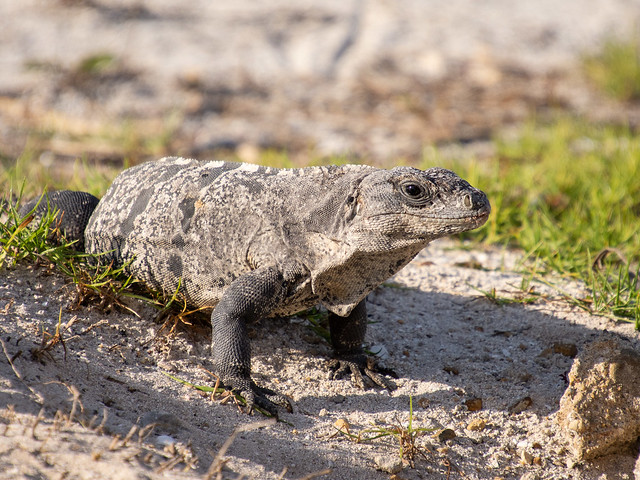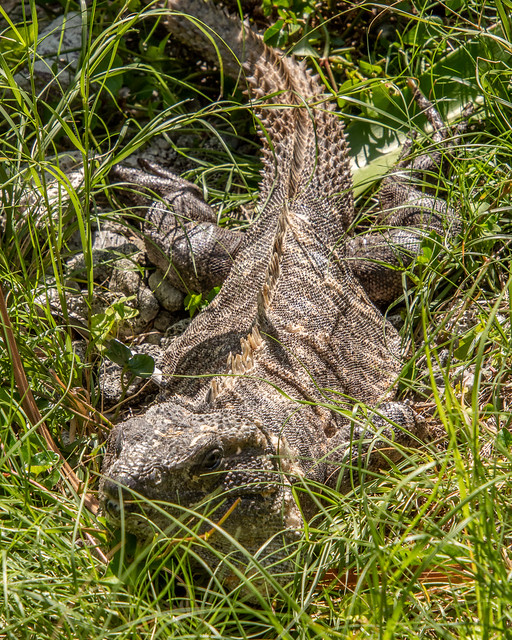These lizards were common on Blackbird Caye. My first thought was that they were iguanas. But looking closer, that didn't seem right. The locals said they weren't iguanas, they were "Garrobo". Which didn't help much because it seemed to be a local name. I think they are spiny-tail iguanas or ctenosaurs, maybe Black spiny-tailed iguana (Ctenosaura similis) (Which apparently have been introduced into Florida and Texas.)


Part of the confusion was that the smaller ones had much more distinct coloring than the larger ones.

This larger one had a hidey hole under a slab of rock behind our cabin. I'm not sure when it fed, we only ever saw him sunning beside his hole.

The older ones also had more obvious "spiny tails". This was one of the largest we saw. (They get to about 1 meter (39 inches) long.)

As long as you moved slowly and didn't try to get too close, they were fairly tolerant of people. But if you did spook them, they would skedaddle. Spiny-tailed iguanas are the fastest lizards in the world, clocked at almost 35 km/hr.
Most of the ones I saw were on the ground, but they would also climb on the buildings and trees .


They are omnivorous, feeding on leaves, flowers, fruits, and seeds as well as small animals.
See all 18 photos in this album


Part of the confusion was that the smaller ones had much more distinct coloring than the larger ones.

This larger one had a hidey hole under a slab of rock behind our cabin. I'm not sure when it fed, we only ever saw him sunning beside his hole.

The older ones also had more obvious "spiny tails". This was one of the largest we saw. (They get to about 1 meter (39 inches) long.)

As long as you moved slowly and didn't try to get too close, they were fairly tolerant of people. But if you did spook them, they would skedaddle. Spiny-tailed iguanas are the fastest lizards in the world, clocked at almost 35 km/hr.
Most of the ones I saw were on the ground, but they would also climb on the buildings and trees .


They are omnivorous, feeding on leaves, flowers, fruits, and seeds as well as small animals.
See all 18 photos in this album
I'm not an expert on these beasts, but "garrobo" is the Salvadoran word for something that, if not the same animal, is very similar.
ReplyDeleteInteresting, so "garrobo" is probably a common name in Central America. Web searches didn't turn up much, although they do include "large lizard" and "iguana".
ReplyDeleteI also found
ReplyDelete"The garrobo, in contrast, includes two species: Ctenosaura similis and Ctenosaura quinquecarinata, known respectively as the Black Spinytail Iguana and the Club Tail Iguana."
(http://www.sugar-beach.com/iguana-vs-garrobo/)
- I think the larger ones might be the Club Tail Iguana variety.
Cool, thanks!
ReplyDelete